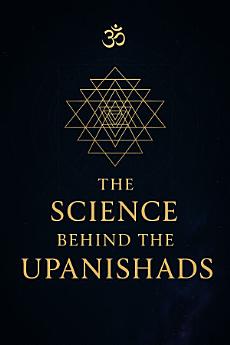The Science Behind the Upanishads
About this ebook
This book, The Science Behind the Upanishads, grew out of a desire to bridge that gap. While the Upanishads speak to timeless truths about consciousness, reality, and the human condition, modern science has evolved sophisticated tools and theoretical frameworks to investigate similar questions. We now live in an era where quantum physics challenges the materialist perspective, neuroscience explores the boundaries of mind and self, and cosmology pushes us to revisit our assumptions about time, space, and existence. When we hold these contemporary findings alongside the insights of the Upanishads, fascinating resonances emerge.
This book is organized to guide you through this convergence, starting from foundational concepts and culminating in advanced parallels with modern scientific theories:
Chapter 1: Introduction to the Upanishads
We begin with an overview of the Upanishads’ historical context, themes, and key figures, setting the stage for deeper explorations.
Chapter 2: The Concept of Brahman and Atman
We then investigate the cornerstone concepts of Brahman (the ultimate reality) and Atman (the inner self), highlighting their centrality in Upanishadic philosophy.
Chapter 3: Ancient Knowledge Meets Modern Science
This chapter draws early comparisons between age-old Upanishadic ideas and the most current physics, biology, and cosmology developments.
Chapter 4: Consciousness and the Mind
We delve into the Upanishadic view of consciousness, aligning it with emerging theories in neuroscience and exploring points of convergence and divergence.
Chapter 5: The Nature of Reality
The philosophical inquiry into reality is taken further, addressing metaphysical questions that modern physics continues to grapple with, from space-time to the nature of existence itself.
Chapter 6: The Science of Meditation and Pranayama
Here, we explore how the Upanishads recommend meditation and breath control practices and how modern science interprets and validates these techniques.
Chapter 7: Ethics and Dharma
The Upanishads provide moral and ethical frameworks through the concept of dharma. We consider how these teachings hold up under modern ethical discourse.
Chapter 8: Unity in Diversity
The interconnectedness of all life—a prevalent theme in the Upanishads—finds surprising affirmation in fields like ecology and systems theory, which we examine here.
Chapter 9: The Upanishads and Quantum Physics
Delving into the heart of modern science, we look at quantum mechanics and its philosophical implications, drawing parallels with Upanishadic perspectives on non-duality and the observer effect.
Chapter 10: Conclusion and Future Directions
Finally, we synthesize the key lessons from previous chapters and propose avenues for future research, reflecting on how ongoing scientific discoveries might further illuminate Upanishadic thought.
Throughout these chapters, our aim is to clarify core Upanishadic teachings in a way accessible to modern readers and to reveal how contemporary science can both challenge and affirm these ancient ideas. By the end, you may find that the boundary between science and spirituality is not as rigid as it often appears. Instead, the conversation between the two domains can lead us to a richer, more holistic appreciation of life, consciousness, and the cosmos.
We embark upon this journey with great enthusiasm and respect for both the scientific endeavor and the spiritual quest. May these pages invite you to see the Upanishads not as relics of a distant past but as vibrant, living texts that continue to shape our understanding of reality—bridging ages, traditions, and ways of knowing.
Ratings and reviews
About the author
Dr. Harsh Vardhan is a renowned psychologist who specializes in mindfulness practices and corporate performance enhancement. Holding a master’s degree in psychology and certified training in various mindfulness techniques, Dr. Vardhan has worked with individuals and organizations across diverse, high-pressure environments. Dr. Vardhan has helped countless people develop resilience, maintain mental health, and thrive under stress through this work.
Building on the success of the earlier work, The Essential Vedas: Wisdom for the Modern World, Dr. Vardhan now turns to an in-depth exploration of the Upanishads in The Science Behind the Upanishads. The inspiration for this new book stems from Dr. Vardhan’s profound personal experiences with Upanishadic teachings—insights that proved transformative in both personal and professional contexts. Seeing how these ancient teachings could be harmonized with modern psychological principles, Dr. Vardhan was inspired to delve deeper into the intersections between the Upanishads and contemporary scientific discoveries.
Bringing a unique interdisciplinary perspective, Dr. Vardhan merges a deep knowledge of the scriptures with practical psychological insights. This balanced approach aims to make the timeless wisdom of the Upanishads both accessible and applicable to modern life, offering readers scientifically grounded ways to enhance mental well-being and personal growth. Through The Science Behind the Upanishads, Dr. Harsh Vardhan continues a dedicated mission to illuminate ancient wisdom, demonstrating its power to address the complexities and challenges of our fast-paced, ever-evolving world.
Forward-looking publishing company Educators Plus is dedicated to raising the caliber of instructional materials in today's fast-changing academic scene. Their goal is to equip teachers, students, and lifelong learners with readily available, research-based resources covering many disciplines. Through creative tools and a commitment to excellence, Educators Plus aims to inspire curiosity, critical thinking, and a desire for knowledge in all readers.







